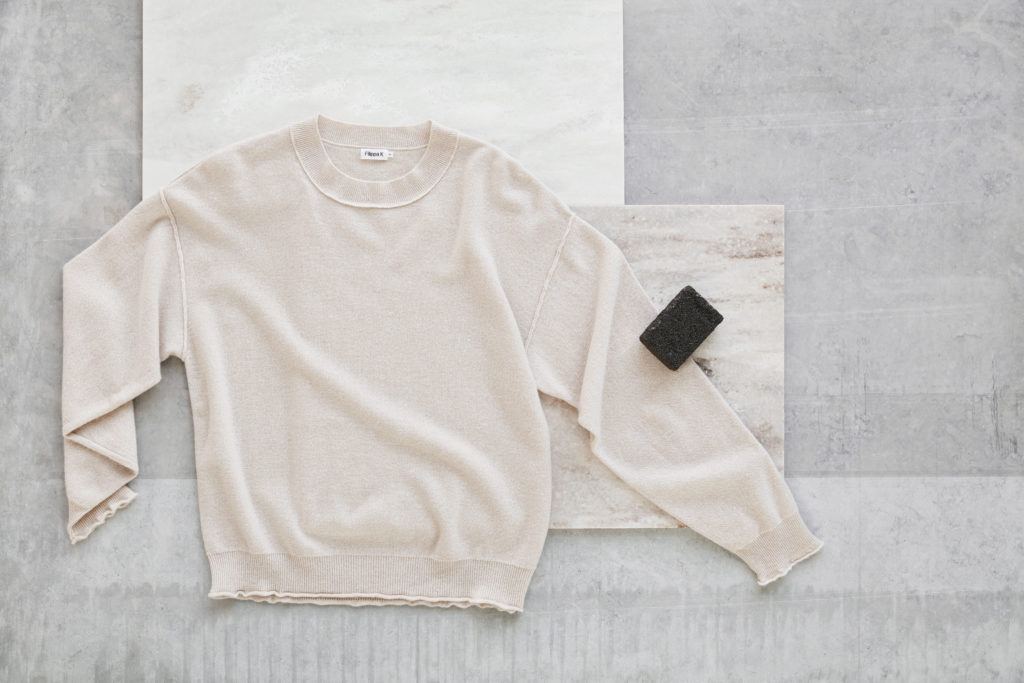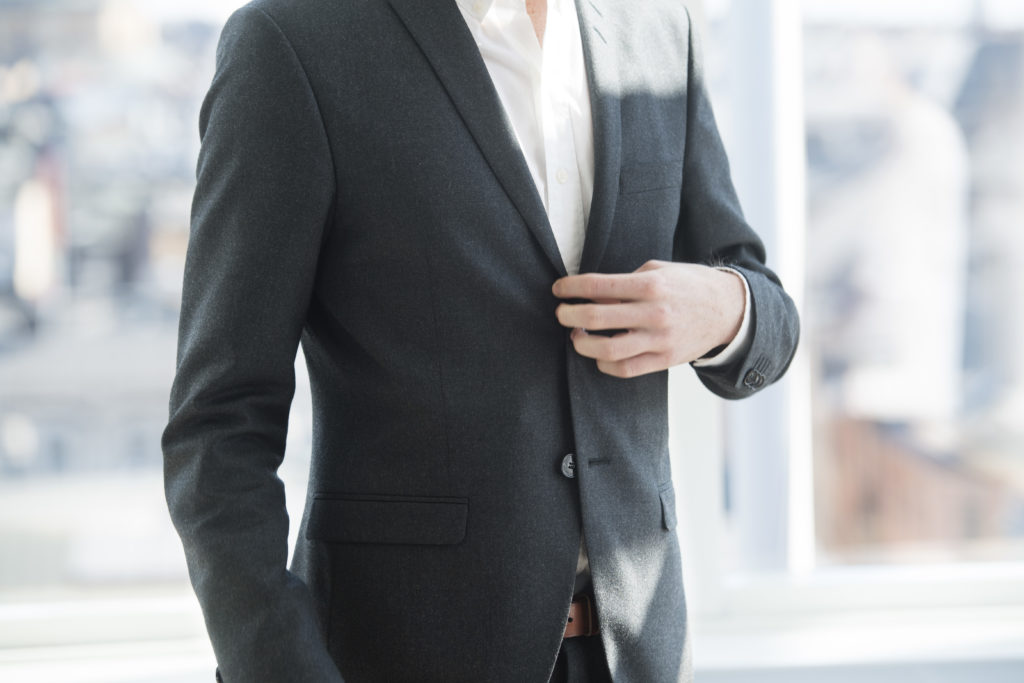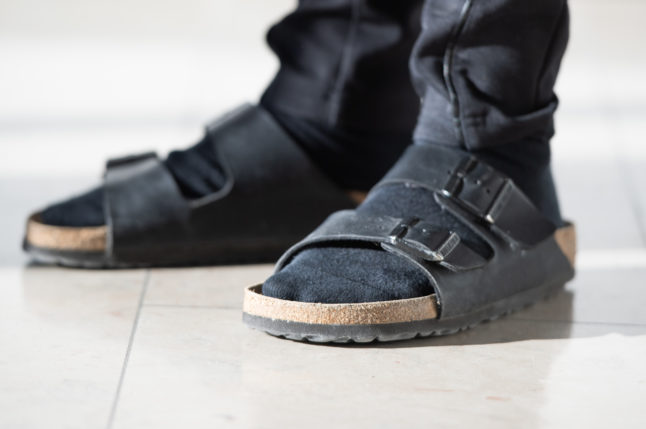'Don't wear bright colours': Eight tips on how to dress like a Swede

Swedes have an international reputation for dressing well, with Scandi style a popular trend outside Sweden. The Local asked Swedes and foreigners living in Sweden to try and figure out the best tips and tricks for how to dress like a Swede.
Black is best
When asking several Swedes their top-tips on how to dress like a Swede, many agreed - wear black.
Young professional Tove advises to keep it “all black, minimalist”. Uppsala newspaper columnist Moa agrees: “Wear a lot of black clothes and DON’T wear sneakers or ‘comfortable’ shoes, like running shoes, with dresses.”
Black is a neutral colour and, in general, if you get the neutral colours right you have got a long way in following the Swedish style.
Neutral colours and a lot of knitwear is a good starting point. Photo: FilippaK/imagebank.sweden.se
Stay neutral
Sweden might be saying goodbye to hundreds of years of neutrality by joining Nato, but Swedish fashion maintains its strong neutral stance when it comes to colour combinations.
Generally speaking, in autumn and winter Swedes tend to wear darker colours, as Sharon put it: “lots of beige, grey, black and ivory knits or wool. Jeans black or any shade of blue. Black tights with white sneakers for skirts and dresses”.
"Swedes in general will wear black and navy together which I've not seen before," she added.
However, as the weather gets warmer, things change, as half-British half-Swedish Erik explained: “in summer/late spring Swedes change shape and personality," adding a bit more colour to their wardrobe.
"Lots of colours yet still somewhat monochrome," he said.
Most Swedes don't wear a tie at work. Photo: Fredrik Sandberg/TT
Follow the news trend, drop the tie
Nils, a reporter and presenter for public broadcaster SVT in western Sweden, does not always wear a tie in front of the camera - and he said his colleagues on national news don't wear ties either.
“It’s not a must,” he said.
A blue shirt, no tie, top button open, beige chinos and a grey dinner jacket is a standard look he'll go for when presenting the evening news.
Nils Arnell presenting the news on SVT Nyheter Väst. Photo: Nils Arnell/SVT
On a day to day basis Nils, who stressed that he’s "not a fashion expert", gave the following advice: “As long as you manage to dress in a neat style, you can get away with quite a lot."
"A white t-shirt and an overshirt work well in most situations and look stylish."
Stay classy, even in class
Engineering student Erik (not the same Erik quoted previously) recently returned to Sweden from a one-year exchange at the University of Birmingham, where he noticed a big difference in student style between the two countries.
“The first thing that comes to mind is that on university campus there are so many people wearing work-out clothes, at least where I was”, he said.
“In Sweden, it’s more common to wear jeans than tracksuit bottoms, compared to the UK”.
It's also common to see a difference in styles even between departments at Swedish universities. The law and economics departments, for example, tend to wear more formal attire with a higher number of students wearing shirts and polos than, say, social sciences or engineering students.
Many students seem to wear a toned-down version of what they might be expected to wear in their future workplace.
When in doubt, think Jantelagen!
Equality and conformity are important concepts when it comes to many aspects of day-to-day life in Sweden, including the clothes you wear.
This doesn't mean you have to do exactly the same as everyone else, but more that being too flashy or over-the-top can be frowned upon.
This can be traced back to Jantelagen, "the law of Jante", a set of 10 rules taken from a satirical novel written by Danish author Aksel Sandemose in the 1930s, which spells out the unwritten cultural codes that have long defined Scandinavia.
Jantelagen discourages individual success and sets average as the goal. It manifests itself in Swedish culture not only with a ‘we are all equal’ ethos but even more so a ‘don’t think you are better than anyone, ever’ mindset.
And this is seen in Swedes' attitude to clothing, too. Flashy, expensive clothing with obvious logos or brands designed to show off your wealth breaks the first rule of Jantelagen: "You're not to think you are anything special".
'Stealth wealth'
This doesn't mean that Swedes don't wear expensive clothes, though. They're just not in-your-face expensive.
Felix, a podcaster from Stockholm describes it as "stealth wealth", saying that Swedes would have no problem buying and wearing "a black jacket without any tags for 10,000kr".
Despite living in Sweden his whole life, he said that it's not always easy to get the style right.
"I'm struggling myself," he admitted.
He suggested taking a look at fashion blogger and journalist Martin Hansson for inspiration on how to dress.
"Do NOT use bright colours," Felix added.
Birkenstocks with socks. Photo: Carl-Olof Zimmerman/TT
Footwear
Most of those we asked said that Swedes are a fan of white trainers, most commonly Stan Smiths or Vagabonds.
With the shoes being popular all year round for men and women, this can cause issues at house parties - as Swedes take off their shoes when they come inside.
This inevitably results in confused guests at the end of the night trying to figure out just which pair of white trainers belongs to them - and trying to find one missing shoe the next day because someone accidentally walked away with one of yours is more common than you might think.
Vans trainers are also popular amongst more alternative crowds (black of course). At work, dress shoes are popular in the winter and loafers or ballerinas in the summer.
In the summer months, you're likely to see Birkenstock sandals on men and women. Most Swedes wear Birkenstocks without socks - unless they're off to do their laundry in their building's tvättstuga.
Birkenstocks are also popular as indoor shoes all-year-round, both at home and at work. It is common to have a "no outdoor shoes" policy in gyms, schools and some offices. This is to avoid bringing a lot of dirt indoors, especially in the winter months when there is snow, rain, grit and salt on the streets.
H&M's then-CEO Rolf Eriksen wears colourful socks at a press conference in 2006. Photo: Björn Larsson Ask/SvD/SCANPIX/TT
Don’t forget the socks!
As you often take your shoes off indoors in Sweden, your socks are visible.
This has led to an unexpected trend for colourful socks with interesting patterns, which are a great way to break the monotone of neutral colours and conformity by expressing your personality - in a lagom way, of course.
A pair of colourful socks or a playful pattern will get you noticed and likely be a conversation starter at a dinner party.
What's your best advice for dressing like a Swede? Let us know!
This article is based on the responses we received from Swedes and foreigners in Sweden on what they think you should wear if you want to follow Swedish fashion trends.
If you have any tips of your own which you think we've left out, let us know! You can comment on this article, send us an email at [email protected], or get in touch with us on Facebook, Twitter or Instagram: @thelocalsweden
By Alex Maxia and Becky Waterton
Comments (2)
See Also
Black is best
When asking several Swedes their top-tips on how to dress like a Swede, many agreed - wear black.
Young professional Tove advises to keep it “all black, minimalist”. Uppsala newspaper columnist Moa agrees: “Wear a lot of black clothes and DON’T wear sneakers or ‘comfortable’ shoes, like running shoes, with dresses.”
Black is a neutral colour and, in general, if you get the neutral colours right you have got a long way in following the Swedish style.
Stay neutral
Sweden might be saying goodbye to hundreds of years of neutrality by joining Nato, but Swedish fashion maintains its strong neutral stance when it comes to colour combinations.
Generally speaking, in autumn and winter Swedes tend to wear darker colours, as Sharon put it: “lots of beige, grey, black and ivory knits or wool. Jeans black or any shade of blue. Black tights with white sneakers for skirts and dresses”.
"Swedes in general will wear black and navy together which I've not seen before," she added.
However, as the weather gets warmer, things change, as half-British half-Swedish Erik explained: “in summer/late spring Swedes change shape and personality," adding a bit more colour to their wardrobe.
"Lots of colours yet still somewhat monochrome," he said.
Follow the news trend, drop the tie
Nils, a reporter and presenter for public broadcaster SVT in western Sweden, does not always wear a tie in front of the camera - and he said his colleagues on national news don't wear ties either.
“It’s not a must,” he said.
A blue shirt, no tie, top button open, beige chinos and a grey dinner jacket is a standard look he'll go for when presenting the evening news.
On a day to day basis Nils, who stressed that he’s "not a fashion expert", gave the following advice: “As long as you manage to dress in a neat style, you can get away with quite a lot."
"A white t-shirt and an overshirt work well in most situations and look stylish."
Stay classy, even in class
Engineering student Erik (not the same Erik quoted previously) recently returned to Sweden from a one-year exchange at the University of Birmingham, where he noticed a big difference in student style between the two countries.
“The first thing that comes to mind is that on university campus there are so many people wearing work-out clothes, at least where I was”, he said.
“In Sweden, it’s more common to wear jeans than tracksuit bottoms, compared to the UK”.
It's also common to see a difference in styles even between departments at Swedish universities. The law and economics departments, for example, tend to wear more formal attire with a higher number of students wearing shirts and polos than, say, social sciences or engineering students.
Many students seem to wear a toned-down version of what they might be expected to wear in their future workplace.
When in doubt, think Jantelagen!
Equality and conformity are important concepts when it comes to many aspects of day-to-day life in Sweden, including the clothes you wear.
This doesn't mean you have to do exactly the same as everyone else, but more that being too flashy or over-the-top can be frowned upon.
This can be traced back to Jantelagen, "the law of Jante", a set of 10 rules taken from a satirical novel written by Danish author Aksel Sandemose in the 1930s, which spells out the unwritten cultural codes that have long defined Scandinavia.
Jantelagen discourages individual success and sets average as the goal. It manifests itself in Swedish culture not only with a ‘we are all equal’ ethos but even more so a ‘don’t think you are better than anyone, ever’ mindset.
And this is seen in Swedes' attitude to clothing, too. Flashy, expensive clothing with obvious logos or brands designed to show off your wealth breaks the first rule of Jantelagen: "You're not to think you are anything special".
'Stealth wealth'
This doesn't mean that Swedes don't wear expensive clothes, though. They're just not in-your-face expensive.
Felix, a podcaster from Stockholm describes it as "stealth wealth", saying that Swedes would have no problem buying and wearing "a black jacket without any tags for 10,000kr".
Despite living in Sweden his whole life, he said that it's not always easy to get the style right.
"I'm struggling myself," he admitted.
He suggested taking a look at fashion blogger and journalist Martin Hansson for inspiration on how to dress.
"Do NOT use bright colours," Felix added.
Footwear
Most of those we asked said that Swedes are a fan of white trainers, most commonly Stan Smiths or Vagabonds.
With the shoes being popular all year round for men and women, this can cause issues at house parties - as Swedes take off their shoes when they come inside.
This inevitably results in confused guests at the end of the night trying to figure out just which pair of white trainers belongs to them - and trying to find one missing shoe the next day because someone accidentally walked away with one of yours is more common than you might think.
Vans trainers are also popular amongst more alternative crowds (black of course). At work, dress shoes are popular in the winter and loafers or ballerinas in the summer.
In the summer months, you're likely to see Birkenstock sandals on men and women. Most Swedes wear Birkenstocks without socks - unless they're off to do their laundry in their building's tvättstuga.
Birkenstocks are also popular as indoor shoes all-year-round, both at home and at work. It is common to have a "no outdoor shoes" policy in gyms, schools and some offices. This is to avoid bringing a lot of dirt indoors, especially in the winter months when there is snow, rain, grit and salt on the streets.
Don’t forget the socks!
As you often take your shoes off indoors in Sweden, your socks are visible.
This has led to an unexpected trend for colourful socks with interesting patterns, which are a great way to break the monotone of neutral colours and conformity by expressing your personality - in a lagom way, of course.
A pair of colourful socks or a playful pattern will get you noticed and likely be a conversation starter at a dinner party.
What's your best advice for dressing like a Swede? Let us know!
This article is based on the responses we received from Swedes and foreigners in Sweden on what they think you should wear if you want to follow Swedish fashion trends.
If you have any tips of your own which you think we've left out, let us know! You can comment on this article, send us an email at [email protected], or get in touch with us on Facebook, Twitter or Instagram: @thelocalsweden
By Alex Maxia and Becky Waterton





Join the conversation in our comments section below. Share your own views and experience and if you have a question or suggestion for our journalists then email us at [email protected].
Please keep comments civil, constructive and on topic – and make sure to read our terms of use before getting involved.
Please log in here to leave a comment.